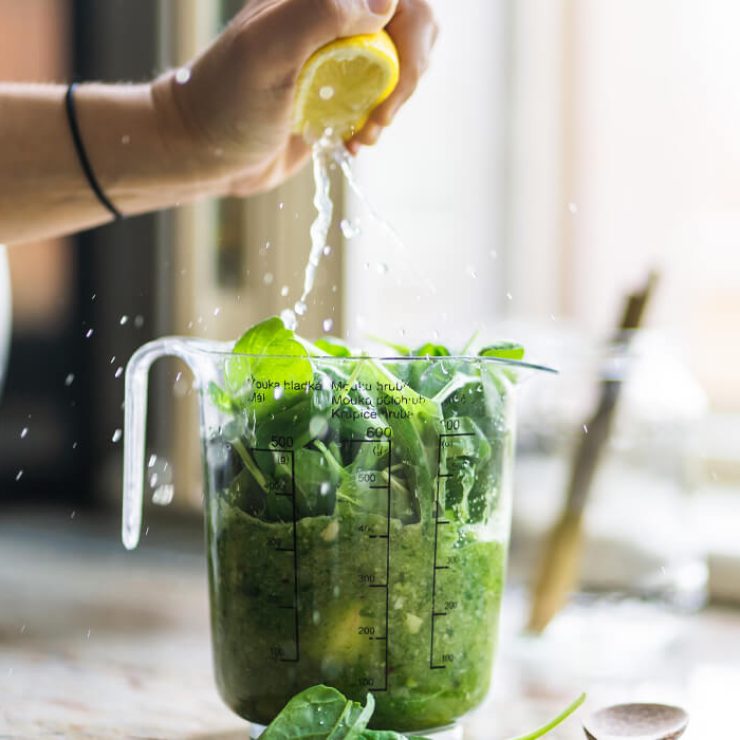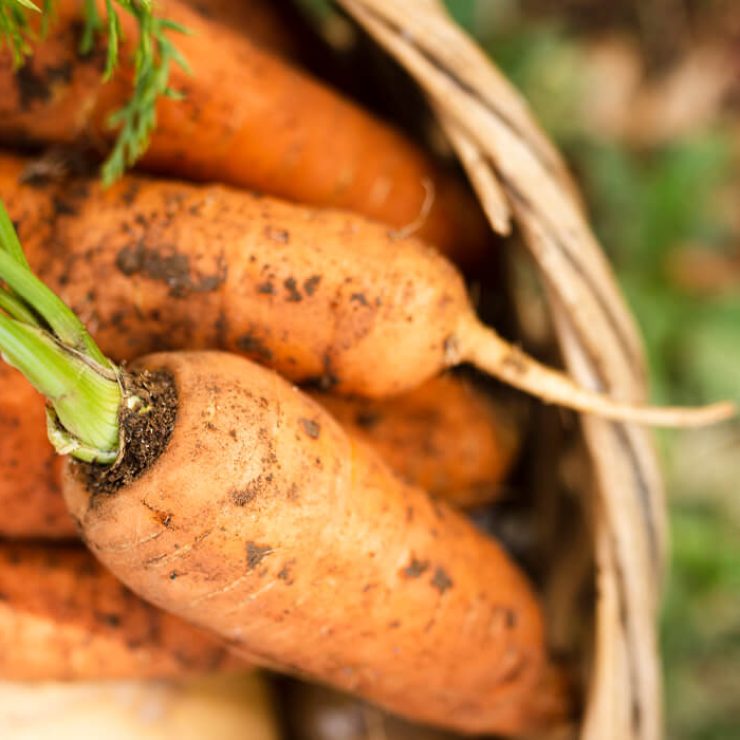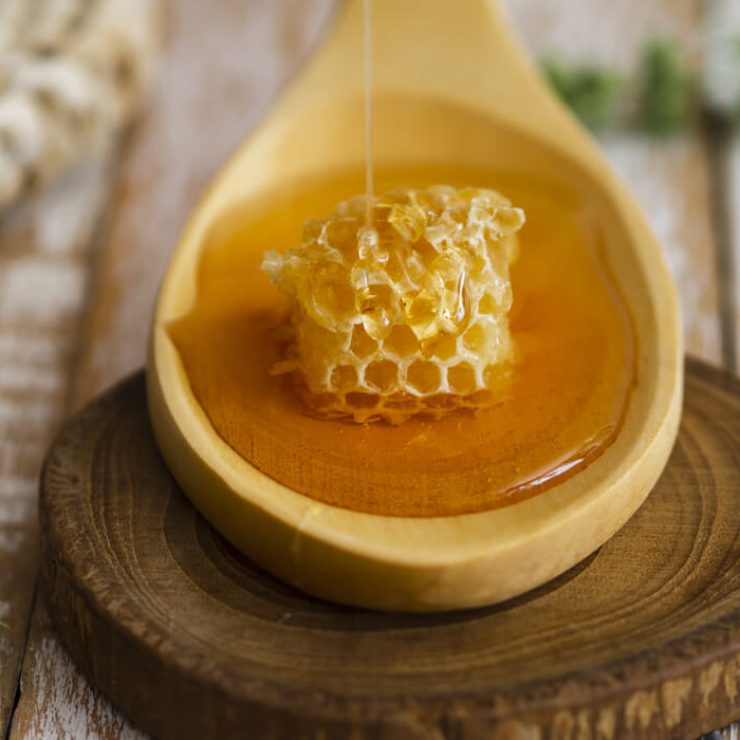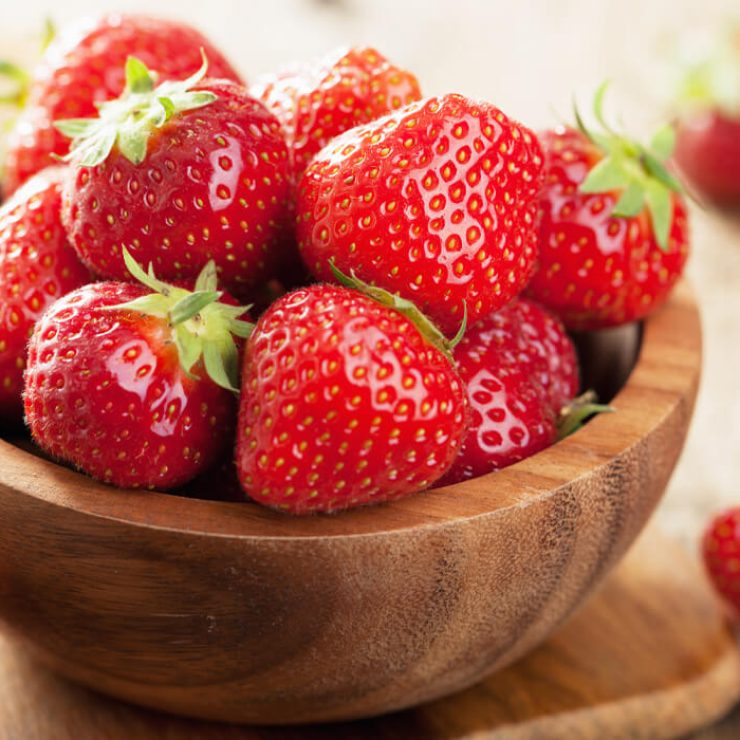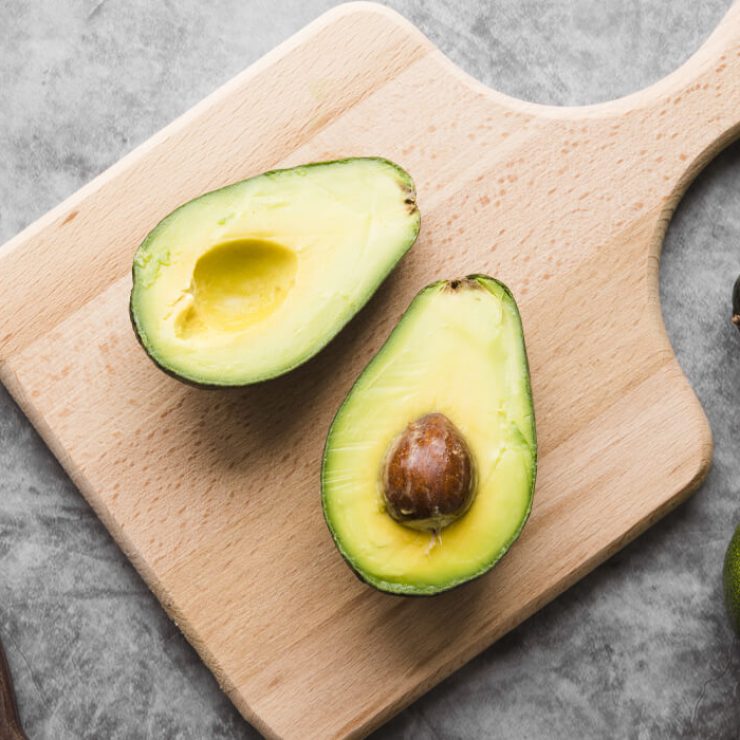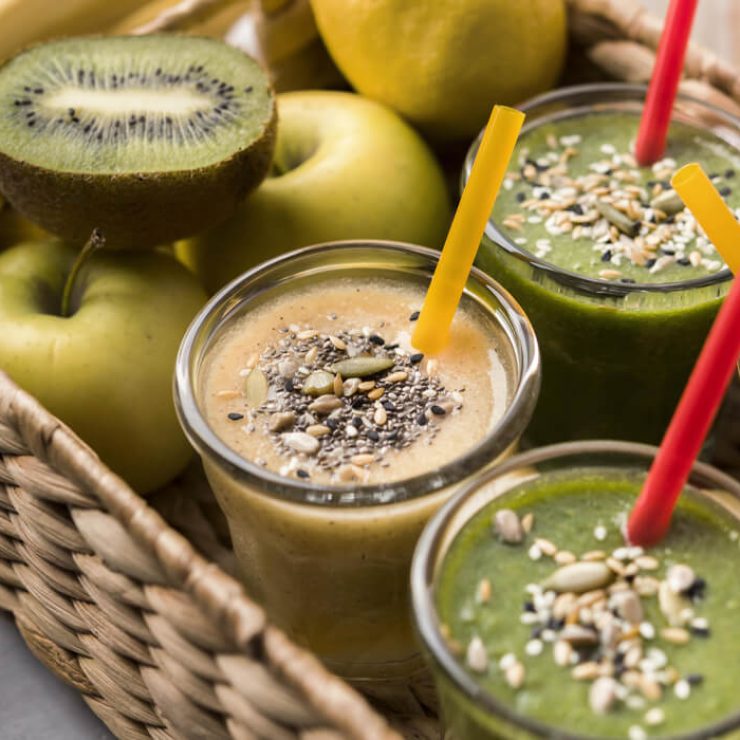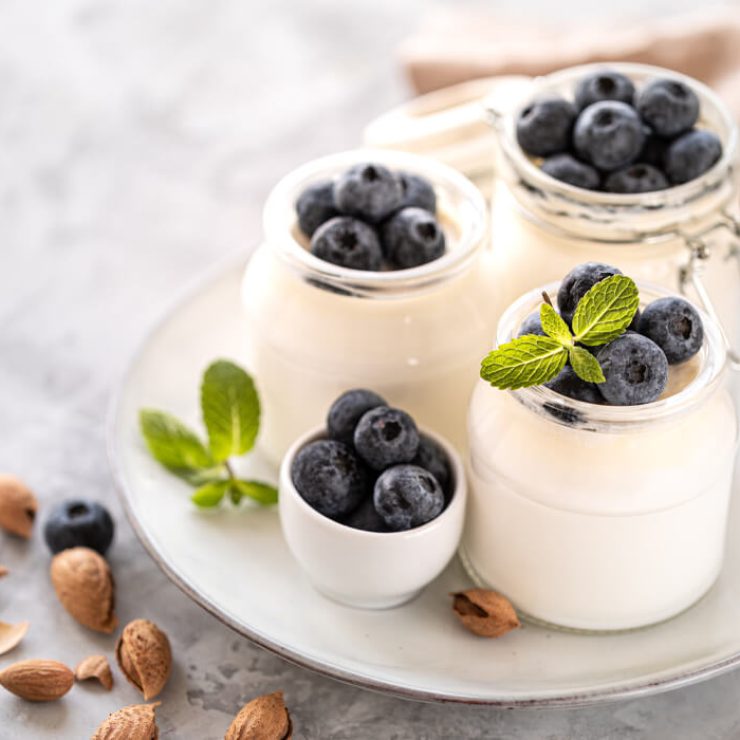Our Complete Product Range
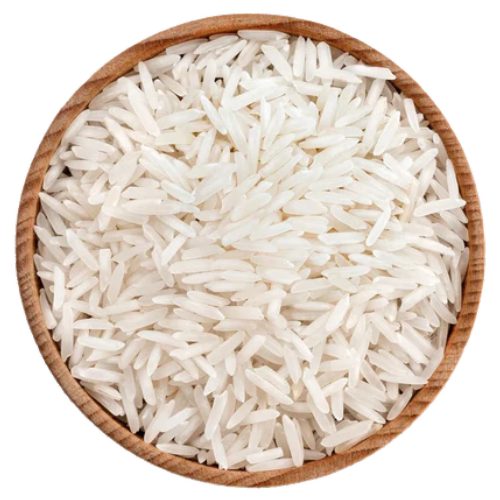
Basmati Rice
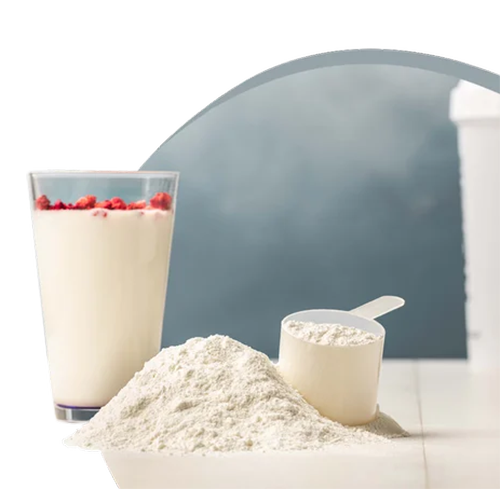
Milk Powder
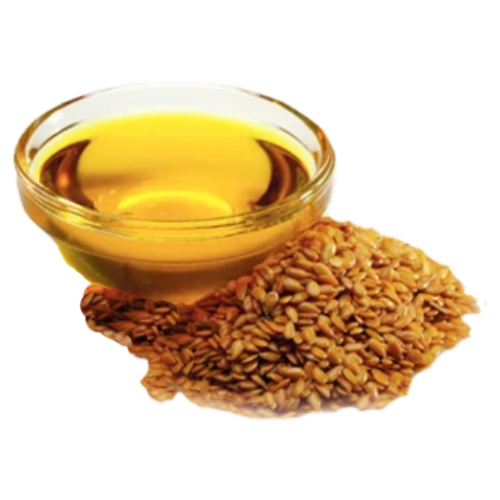
Oil Seeds
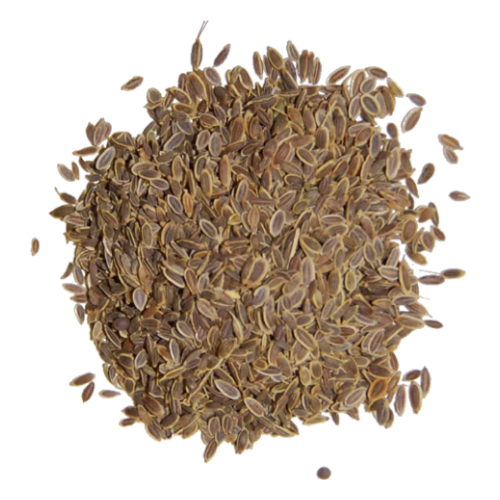
Herb Seeds

Grains
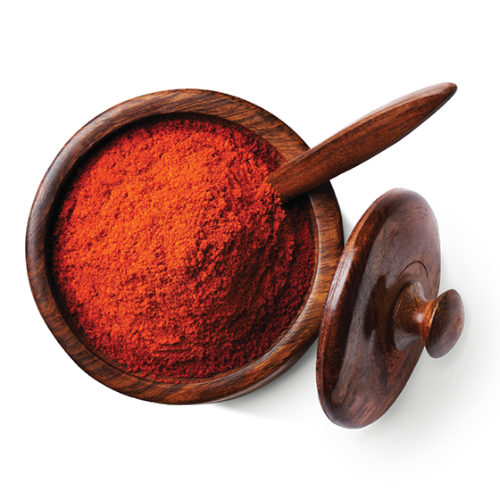
Powder Spices
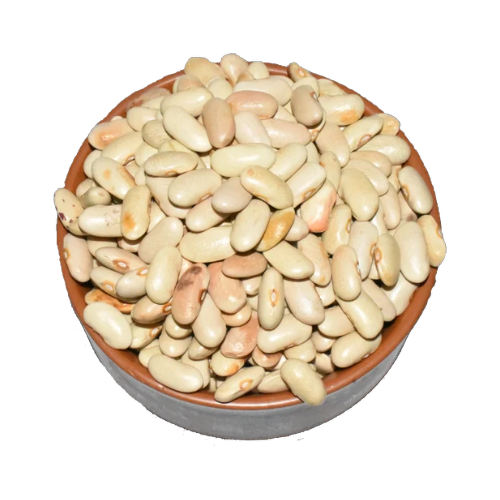
Pulses
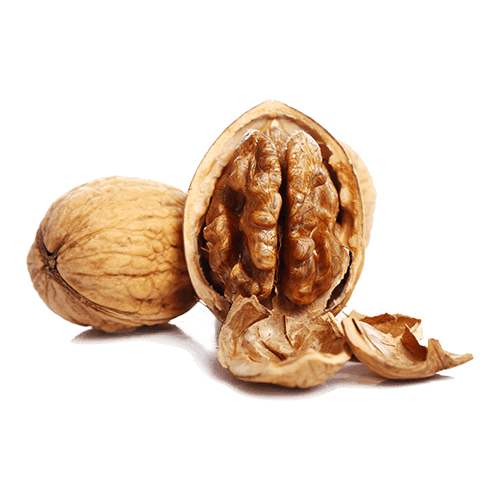
Dry Fruits
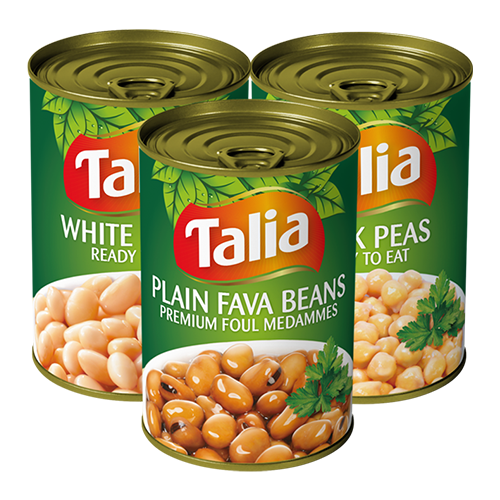
Canned Products

Basmati Rice
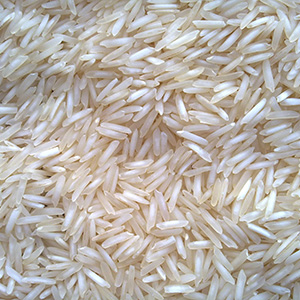
Steam Basmati Rice
Steam basmati rice is processed through a method where the rice is soaked, steamed, and then dried. This process helps the rice grains to retain their natural nutrients and texture, resulting in long, slender grains that are fluffy and separate when cooked.
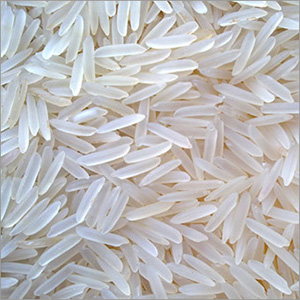
White Sella Basmati Rice
White sella basmati rice is a variety of basmati rice that obtained by removal of its husk, bran, and germ. This variety of rice is cultivated using high-quality paddy seeds and soil, under hygienic conditions by expert farmers.
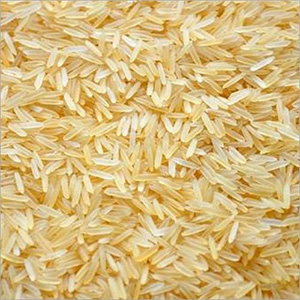
Golden Sella Basmati Rice
Golden Sella Basmati Rice is parboiled basmati rice while still in its husk (rice paddy) and then milled to make a long slender shaped golden color rice grains. When cooked rice is firmer and less sticky, easier to digest, better in nutrition and has strong ability to absorb the flavor of herbs and spices.

Milk Powder
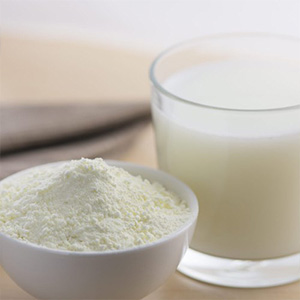
Skimmed Milk Powder
Skimmed milk powder is obtained by removing water from pasteurized skim milk by spray-drying. Skimmed milk powder is classified according to the heat treatment used in its manufacture (high heat, medium heat, and low heat).
Skimmed milk powder is used in a wide variety of applications. It can be used in recombined dairies such as UHT milk, yoghurts or cheeses, but also as non fat milk solids in chocolate or in bakery. As a result, we offer different qualities of skimmed milk powders to suit requirements of each application.

Whole Milk Powder
Whole milk powders are obtained by removing water from pasteurized milk through spray-drying. The powder can contain between 26% and 40% milk fat (by weight) on an “as is” basis, and offers all the nutritional qualities of milk in its dry form. Whole milk powder plays an important role in the manufacture of a wide range of food products. It can be used in reconstituted dairy products such as yoghurt and milk drinks, but also as a source of fat and non-fat milk solids in confectionery and baked goods. The powder can be fortified with vitamins, in order to be repacked for direct consumer use in milk beverages, homemade yoghurt, and coffee and tea whitener.
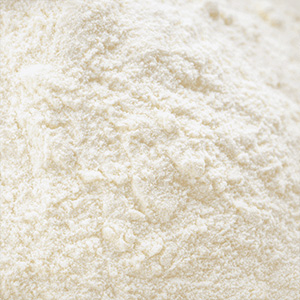
Fat Filled Milk Powder
Fat filled milk powder is obtained by blending vegetable fat with high quality skimmed milk and then spray-drying it. As consumers in developing countries continue to drive the demand for affordable dairy ingredients, they can turn to fat-filled milk powders to meet their needs. Fat filled milk powder can be an economical substitute for whole milk powder in many different applications, including dairy drinks, yoghurts, and coffee and tea whiteners.
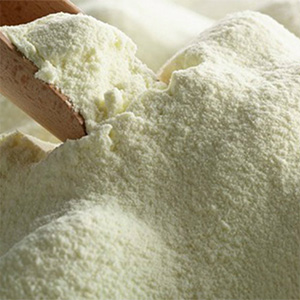
Butter Milk Powder
Buttermilk powders are obtained by spray-drying buttermilk, which comes from the churning of cream into butter. Buttermilk composition is close to that of skimmed milk but with a higher fat content. It is rich in milk fat globule membrane and phospholipids. Buttermilk powder has many functional properties linked to its distinctive composition, making it an appealing ingredient for many applications. Proteins in buttermilk powder can function as emulsifiers, stabilizing oil-water interfaces in products such as sauces, dressings or ice creams

Oil Seeds
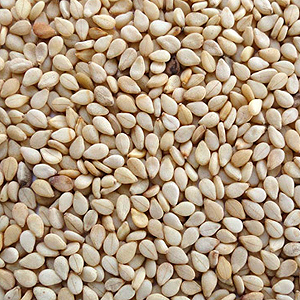
Natural Sesame
Natural Sesame Seed ( White ) is seed of SESAMUM INDICUM PEDALIACEAC family. Seeds origin from top quality soil It is extensively used for the application in bakery products such as bread, bread sticks, cookies, candies, pasta, vegetables and curry dishes. The taste of roasted sesame seeds has wide applications in food industries including chocolate and ice cream and halva. As it is cholesterol free so being used in health food industries. sesame seeds a very good source of manganese and copper, but they are also a good source of calcium, magnesium, iron, phosphorus, vitamin B1, zinc and dietary fiber. In addition to these important nutrients, sesame seeds contain two unique substances: sesamin and sesamolin. Both of these substances belong to a group of special beneficial fibers called lignans, and have been shown to have a cholesterol-lowering effect in humans, and to prevent high blood pressure and increase vitamin E supplies in animals

Mustard Seeds
Hindi Name : Peeli sarson |
Botanical Name : Brassica alba, B. Juncea, B. Nigra |
Family Name : Brassicaceae
The Indian subcontinent they are often used whole, and are quickly fried in oil until they pop to impart a flavor to the oil.. The spice is widely used for its flavor and aroma in the food processing industry. Mustard oil can be extracted from the seeds. The seeds, particularly the white ones are ground into flour and is mixed to a thick paste with a little water to make the condiment mustard. Mustard oil is widely used to cook lot of eatables and dishes. Whole white mustard seed is used in pickling spice and in spice mixtures for cooking meats and seafood. Powdered mustard acts as an emulsifier in the preparation of mayonnaise and salad dressings. Powdered mustard is also useful for flavoring barbecue sauces, baked beans, many meat dishes, deviled eggs, beets and succotash. There are many ready-made mustards from mild and sweet to sharp and strong. They can be smooth or coarse and flavored with a wide variety of herbs, spices and liquids.
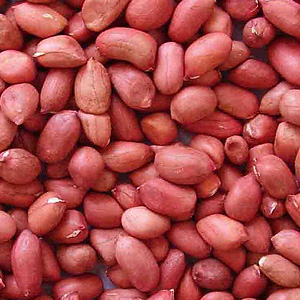
Groundnut Kernel
Ground nut kernel is also known as peanut. Its high oil and protein contents makes it an important food crop. Apart from its various edible uses, it is basically used as a source of edible oil. The oil extracted has a huge international market, both for its nutritional and health aspects. The ground nut kernels are consumed as fresh, dried, roasted, boiled and in so many recipes. Groundnut kernel is very popular in the international market for its characteristic nutty taste, natural flavor and crunchy feel.

Herb Seeds

Ajwain
The ajwain seeds combine the powerful and stimulant qualities of capsicum, bitter property of chiretta and anti spasmodic qualities of asafoetida. An essential oil is eracted by steam distillation of the crushed seeds of ajwain. This valued considerably in medicine on account of the presence of thymol. For a long time this oil was the main source of thymol.Some very valuable unani medicines are prepared from ajwain seeds. The oil of ajwain is an almost colourless to brownish liquid with characteristic odour and a sharp hot taste. Ajwain is called omam in the southern part of India. Omam (ajwain) water that is the water distilled from the seeds in an excellent carminative that cures flatulence, indigestion & low appetite.This water is a household medicine not only in south India but also in Srilanka, Malaysia and even in some Arabian countries.
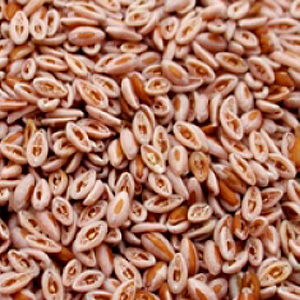
Psyllium Seeds
Psyllium Seed consist of the eighth layer of dried ripe seeds of plantago Ovataforsk (Seed). Psyllium husk seed contains glycosides and mucilage. Psyllium seeds contain about 19% fiber, 18.8% protein, and 10-20% triglycerides. Psyllium husk seed has property of mucilage formation on extraction of moisture. Psyllium seeds are cooling, laxative, soothing, antiacidic, anti diuretic and demulcent.The soluble fiber derived from psyllium seed husk is also known as psyllium hydrophilic mucilloid, psyllium hydrocolloid and psyllium seed gum. It is a white to cream colored, slightly granular powder with a slight acid taste. Psyllium Seed is considering as a good intestinal cleanser and stool softner.

Tukmaria
Tukmerai is a tender low-growing herb is grown as a perennial in warm, tropical climates. There are many varieties of basil used in Italian food is typically called sweet basil, as opposed to Thai basil or holy basil, which are used in Asia. It grows to between 30 and 130 cm tall, with opposite, light green, silky leaves 3 and 11 cm long and 1 and 6 cm broad. The features are as below:
- Flowers are quite big, white in color and arranged in a terminal spike
- Recommended to be used fresh; in cooked recipes it is generally added at the last moment, as cooking quickly destroys the flavor
- The fresh herb can be kept for a short time in plastic bags in the refrigerator
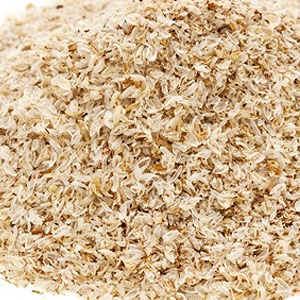
Psyllium Husk
Psyllium husk is an excellent source of soluble dietary fibre. It is native to Europe, North Africa and Asia and has been used for thousands of years as a safe and effective bulk laxative, intestinal cleanser and for maintaining bowel function, high in both fibre and mucilage. Modern diets lack natural fibre as it is removed during the refining process; a lack of fibre in the diet can lead to many digestive disorders such as constipation and haemorrhoids and is often the underlying cause to many diseases. Psyllium Fibre is beneficial for both constipation and diarrhoea and can assist in maintaining a normal and healthy bowel function.
100% natural fibre product which consists solely of husks from the plant Ispaghula husk. Husk is a laxative herbal medicine which alleviates the symptoms of constipation, slow bowel movements, diarrhoea and irritable bowel syndrome (IBS) in a 100% natural way – and at the same time you benefit from the cholesterol lowering effects of the fibre.

Aselio
Aselio is a major herbal product from India. It is basically of red color and the used part is Halam/ Haloon seeds the main place of origin of this product is Rajasthan.
We have capacity to fulfill your order at any quantity but minimum order in this product is 22 Metric Ton.
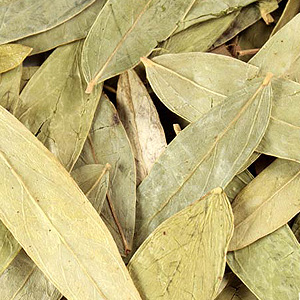
Senna leave
Tsenna leaves which is used as a purgative agent for various medical applications. Cassia senna leaves is extensively used for cleansing purposes and also widely known as a natural and harmless laxative.
Leaves contain glycosides, sennoside A, sennoside B, sennoside C and sennoside D. Two naphthalene glycosides have been isolated frofn leaves and pods. Senna also contains the yellow flavonol colouring matter kaempferol, its glucoside kaempferin and isorhamnetin.
Leaves and pods are used traditionally as purgatives, Topical use of the leaves for dermatosis is also not uncommon.
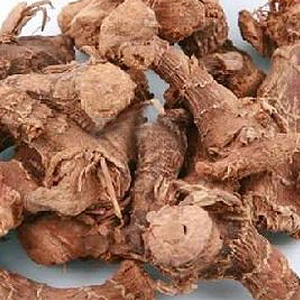
Kolinjan
This is the type of ginger Thai cooks use most. The flavor is both more lemony and more peppery than that of common ginger, and it has a richer aroma. The skin is pale yellow, with pink-tinged knobs; the interior is cream-color. Kha is never eaten alone; it is used as a flavoring component. We float large slices into soups or chop and pound pieces into curry pastes.
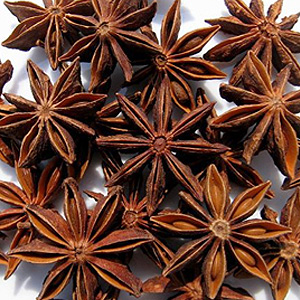
Star Anise Seeds
Star anise is the unusual fruit of a small oriental tree. It is, as the name suggests, star shaped, radiating between five and ten pointed boat-shaped sections, about eight on average. These hard sections are seed pods. Tough skinned and rust coloured, they measure up to 3cm (1-1/4”) long. The fruit is picked before it can ripen, and dried. The stars are available whole, or ground to a red-brown powder.
Apart from its use in sweetmeats and confectionery, where sweeteners must be added, it contributes to meat and poultry dishes, combining especially well with pork and duck. In Chinese contributes to meat and poultry dishes, combining especially well with pork and duck. In Chinese red cooking, where the ingredients are simmered for a lengthy period in dark soy sauce, star anise is nearly always added to beef and chicken dishes. Chinese stocks and soups very often contain the spice.. It flavours marbled eggs, a decorative Chinese hors d’oeuvre or snack. Mandarins with jaded palates chew the whole dried fruit habitually as a post-prandial digestant and breath sweetener – an oriental comfit. In the West, star anise is added in fruit compotes and jams, and in the manufacture of anise-flavoured liqueurs, the best known being anisette. It is an ingredient of the mixture known as “Chinese Five Spices”.
Star anise has carminative, stomachic, stimulant and diuretic properties. In the East it is used to combat colic and rheumatism. It is a common flavouring for medicinal teas, cough mixtures and pastilles.
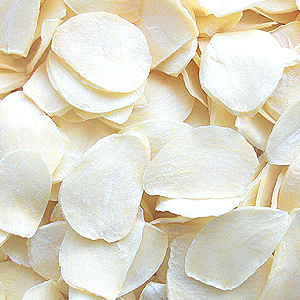
Garlic Flakes
Garlic flakes are simply dehydrated bits of garlic that can be stored for long periods of time and used in all sorts of foods. Garlic flakes work very well in a number of applications. The flakes can easily be added to soups and stews to add a bit of flavor. The used of fried garlic flakes in a meat loaf also ensures an infusion of taste in the finished product. Casseroles can also be enhanced with the use of garlic flakes. Essentially, any recipe that includes cooking time and some sort of liquid is all that is needed. As the flakes absorb some of he juices or liquids during the cooking process, the flakes release the garlic flavor, enhancing the overall taste of the dish.

Long Pepper
Long pepper (Piper longum), sometimes called Javanese, Indian or Indonesian Long Pepper. The fruit of the pepper consists of many minuscule fruits — each about the size of a poppy seed — embedded in the surface of a flower spike that closely resembles a hazel tree catkin.
Long pepper is an extremely rare ingredient in European cuisines, but it can still be found in Indian vegetable pickles, some North African spice mixtures, and in Indonesian and Malaysian cooking. It is readily available at Indian grocery stores, where it is usually labeled Thippili.
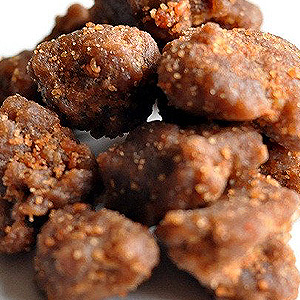
Asafoetida
Hindi Name : Hing / Heeng |
Botanical Name : Ferula Asafoetida |
Family Name : Apiaceae Oleogum |
Commercial Part : Resin extracted from rhizome and thickened root
Asafoetida or asafoetida (Devil’s Dung) is dried latex (oleo-gum-resin) exuded from the living rhizome, rootstock or taproot of an umbelliferous plant of varied species. Being a unique blend of finest ingredients, Indian asafoetida from Kashmir enjoys an exalted position in the international market.
The aroma of this spice is less when used in powdered form but the resin has a non-perishable fragrance. The resin is strongly scented and must be fried shortly in hot oil. The reason being that the resin dissolves in the hot fat and gets better dispersed in the food and the high temperature changes the taste to a more pleasant impression.
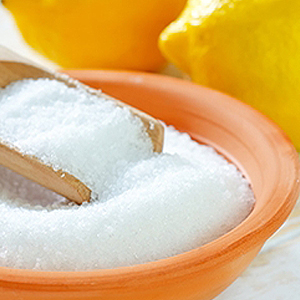
Citric Acid
Citric acid is a weak organic acid, and it is a natural preservative and is also used to add an acidic, or sour, taste to foods and soft drinks.
Citric acid exists in greater than trace amounts in a variety of fruits and vegetables, most notably citrus fruits. Lemons and limes have particularly high concentrations of the acid; it can constitute as much as 8% of the dry weight of these fruits.
The main functions of citric acid and the citrates in foods and beverages can be summarised as follows:
- as a flavour adjunct, to improve taste
- as a pH control agent for example for gelation control, buffering and preservative enhancement
- and as a chelating agent where it improves the action of antioxidants and prevents spoilage of foods such as seafood.
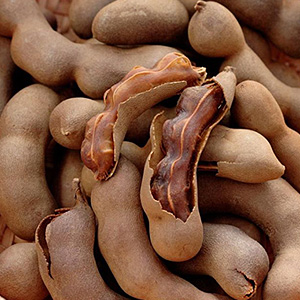
Tamarind
Hindi Name : Imli |
Botanical Name : Tamarindus indica L |
Family Name : Cesalpiniaceae |
Commercial Part : Pods
Tamarind is actually the fruit pod produced by tall, semi-evergreen tree grown primarily in India. The beans and pulp within the pod are virtually no smell, but is has an extremely sour taste. Tamarind is available in whole pods, a compressed block, paste or concentrates and is most likely to be found in Asian markets.
India is the only producer of tamarind on a commercial scale. A large part of India’s production of tamarind is exported to West Asia, Europe and America, where it is used for food specialties like Worcestershire sauce. It is used as the equivalent to lemon juice in Indian cuisine, but is also used extensively in Asian cooking. It is often used to make juices, soups, chutneys and bean dishes.
Available in the form of pulp and juice concentrates it is used mainly for the preparation of cool drinks, seafood and a range of sophisticated cuisine. Fresh tamarind can be stored at room temperature, but should be used within a few days of purchase. Tamarind concentrate can be kept in an airtight container in the refrigerator for several months.

Grains
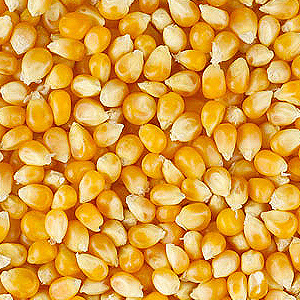
Maize
Maize Name:- Maize Maize is the most important crop in the world after wheat and rice. It has continued to be the leading crop in terms of production and area of land on which it has been produced during the last decade. It is as much a significant crop in the American countries like rice and wheat in Asia. Maize has a wide variety of usage too. It is used as a feed and in the production of alcoholic beverages and of food sweeteners, starch, oil and proteins. Recently, it has been discovered that maize or corn can also be used in the production of fuel. Production Centers: Andhra Pradesh, Karnataka, Bihar, Punjab, Utter- Pradesh
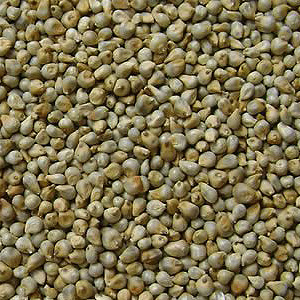
Millet Bajra
Millet is a general term of grasses yielding small seeded edible grains, grown prodominantly in the dry areas of the far east, and in africa.they are lower protein but richer in fat than wheat, thus they are comparabale with rich in nutiritional statues.millets may be fermented to make alcoholic beverages. Millets may be boiled and consumed whole. In south eastern europe the grains are ground into meal which is used for making a fat, heavy bread or for porridge. In the west it is used principally as animal feed, in particular for poultry and other birds.
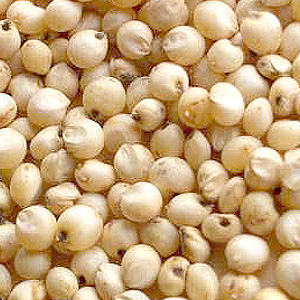
Sorghum Seeds
The sorghum grain is an important cereal grain that is said to be the staple food of the poor in many countries. The grain is similar to that of maize but having more fats and proteins. This proves beneficial for the livestock and hence is the reason of the popularity of the crop as a feed.
Sorghum is the fifth most important cereal crop in the world after wheat, rice, maize and barley. It is found in the arid and semi arid parts of the world, due to its feature of being extremely drought tolerant. The nutritional value of sorghum is same as of that of corn and that is why it is gaining importance as livestock feed. Sorghum is also used for ethanol production, producing grain alcohol, starch production, production of adhesives and paper other than being used as food and feed.
Production Centers: Andhra Pradesh, Karnataka, Uttar-Pradesh, Rajasthan, Punjab
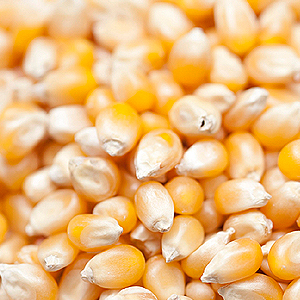
Popcorn
Popcorn is a variety of corn kernel, which explosively expands and puffs up when heated.
A popcorn kernel’s strong hull contains the seed’s hard, starchy endosperm with 14-15% moisture, the latter of which turns to steam as the kernel is heated. The pressure continues building until it exceeds the hull’s ability to contain it. The kernel ruptures and explodes, allowing the contents to expand, cool, and finally set in a popcorn puff 20 to 50 times the size of the original kernel.
Some strains of corn (taxonomized as Zea mays) are cultivated specifically as popping corns. The Zea mays variety everta, a special kind of flint corn, is the most common of these.

Powder Spices
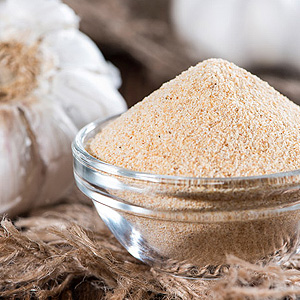
Garlic Powder
Garlic Powder, which is used mainly as a condiment in food preparations, also serves as carminative and gastric stimulant in many medical preparations. As a condiment, it is used for flavoring mayonnaise and tomato ketchup or sauces, salad dressings, meat sausages, gravies, stews, spaghetti, chutneys, pickles, curried dishes, etc. It aids in digestion and absorption of food. It also possesses anathematic and antiseptic properties.
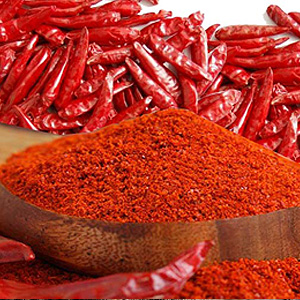
Red Chilli
Red chilli powder is an indispensable ingredient in most Indian dishes. Dried red chillies are powdered after being sun dried till they are very crisp. A spice blend consisting of one or two types of dried red chilies that are ground and pulverized into a fine powder.
Red chilli powder is an indispensable ingredient in most Indian dishes. The color and flavour of red chilli powder depends on the variety of red chilies used to make the powder. A variety of chilli powder made from the cayenne chilli pepper is called Cayenne Pepper and is widely used in Caribbean and Spanish Cuisine.

Coriander Powder
Coriander Powder is an ingredient of garam masala, pickling spices and pudding spices and is used in cakes, breads and other baked foods. Sugared comfits made from the seeds are a traditional sweetmeat and breath sweetener. Coriander powder is a characteristic of Arab cookery, being common with lamb, kid and meat stuffings. Taklia, a popular Arab spice mixture, is coriander and garlic crushed and fried.
Coriander contains an antioxidant that helps prevent animal fats from turning rancid. It also contains substances that kill meat-spoiling bacteria and fungi. These same substances in Cilantro also prevent infection in wounds. Coriander has been shown to improve tummy troubles of all kinds, from indigestion to flatulence to diarrhea.
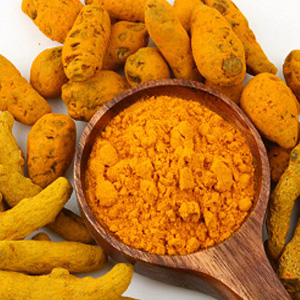
Turmeric Powder
Turmeric powder, a bright yellow spice from the rhizome of the Curcuma longa plant, has a long history of traditional Ayurvedic usage. Turmeric powder is made from dry Turmeric Rhizomes.
It is used as important spice, beauty products and in spiritual ceremonies. There are various benefits and uses of Turmeric Powder from food to medicines. There are hardly few recipes in which Turmeric Powder is not used in Indian Dishes. Almost all Indian vegetable and meat dishes use turmeric either as separate spice or in the spice mixture. A small pinch of turmeric powder would add an orange-yellow hue to salad dressings. It is also a great spice to complement recipes that use rice, lentils and dry beans. Turmeric powder is one of the most significant colouring material of India. Turmeric colour also serves as a chemical indicator since it changes its colour on adding acids or alkalis. Turmeric powder can be used for encapsulation and preparing highly beneficial Turmeric health tablets. It is an essential ingredient in various Indian food preparations for taste and colouring and in various herbal preparations. Turmeric powder, extracts and curcumin also exhibit antioxidant property. Turmeric powder’s flavor could also be described as peppery, or even warm in the mouth.

Pulses
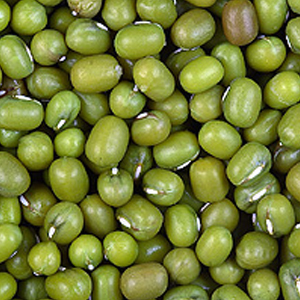
Mung Beans
Mung beans (also known as green gram, Hindi: moong, Gujarati: mug), are little green seeds that are yellow inside. They have been eaten by Indians for thousands of years. Mung beans are used for both sweet and savory dishes in Indian cooking. They are eaten whole, sprouted, split with the skins on and split with the skins removed. In fact, mung dal (split with the skins removed) is one of the most commonly used lentils in my kitchen.
Mung beans with their skins on have a flavor reminiscent of green leafy vegetables but the mung dal with the skins removed has a mild sweet flavor and is often used for desserts.
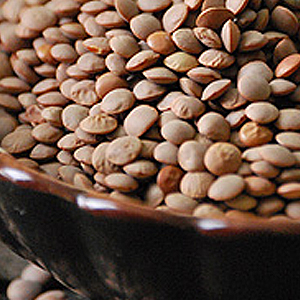
Lentils
Masoor (also known as red lentil, Hindi: masoor, Gujarati: masoor) is a brown skinned lentil that is orange on the inside. Masoor dal has a pleasant earthy flavor and is very common in Northern India. It is commonly used to make dal, soups and stews.
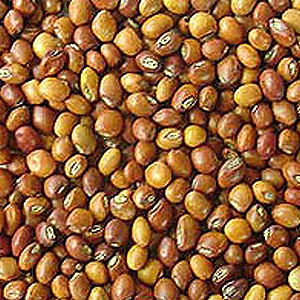
Toor
Pigeon Pea (also known as tropical green pea, Hindi: toor, Gujarati: tuver), is a beige lentil with a yellow interior. This is the most important pulse in a Gujarati household. The fresh peas are highly prized and used for curries and stuffing in spicy handpies. They have a delicious nutty flavor that is very distinctive. The dried and split peas are a staple in everyday cooking as well. The famous “Gujarati Dal” is made with this pea where the balance between spicy, sweet and sour is most important.

Urad
Urad (also known as black gram, black lentil, Hindi: urad, Gujarati: adad), is a little black seed with a white interior. It is very similar to a mung bean in size and shape but tastes entirely different. It has also been eaten in India for thousands of years and is highly prized. Urad has an earthy flavor and an unusual mucousy texture (it’s a good thing!) when it’s cooked. The popular, and amazing, dal makhani is made with urad. Papad (or poppadums) are usually made with urad dal as well.
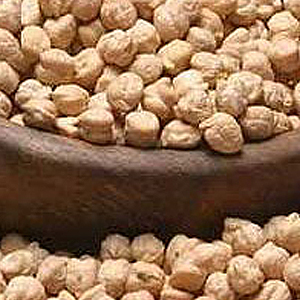
Chana
Chana Dal or the Yellow Chickpea Dal is a favorite among the people of India. The Chana Dal is low in saturated fat, without any trans fats, and packed with nutritious carbohydrates. With their sweet and nutty flavor, the Chana Dal is the most popular pulse in India. The Chana Dal is available in quality packaging materials. Chana dal has a warm, sweet taste which makes it good both when cooked alone and when combined with vegetables.
The natural “Chana Dal” we supply in the market is processed through our highly developed processing method that ensures its hygienic quality. We are one of the leading chana dal manufacturers and exporters from India. The Chana Dal offered by us is highly appreciated by the clients owing to its high quality. Chana dal is delicious, nutritious and easily digested, but, aside from its usage both in dal dishes and savories, the legumes are also roasted and powdered into chickpea flour (besan), another widely used ingredient in nearly every regional cuisine.

Dry Fruits
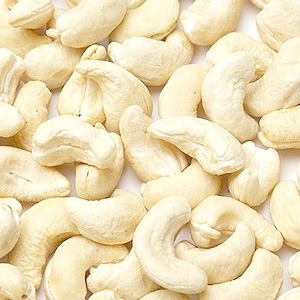
Cashewnut
All over the world is known mostly by its nuts owing to its unique taste, free availability and multifarious uses in the kitchen, bakery and confectionery. These nuts grow attached to an apple of a tree, which is not an apple in the real sense but a pseudo apple. Botanically the nut is the fruit and the apple is its pendecule. Cashew nuts, like all nuts, are an excellent source of protein and fiber. They are rich in mono-unsaturated fat which may help protect the heart. Cashew nuts are also a good source of potassium, B vitamins and folate. They contain useful amounts of magnesium, phosphorous, selenium and copper which help prevent heart disease, promote strong bones, and give you energy. Eating cashews may also reduce your risk of getting Colon Cancer.

Raisins
Raisins are made by dehydrating grapes in a process using the heat of the sun or a mechanical process of oven drying. Among the most popular types of raisins are Sultana, Malaga, Monukka, Zante Currant, Muscat and Thompson seedless. The size of small pebbles, raisins have wrinkled skins surrounding chewy flesh that tastes like a burst of sugary sweetness. While the colors of raisins vary, they are generally a deep brown color, oftentimes with hints of a purple hue.
Raisins are very good source of boron which is useful and Studies have shown that boron provides protection against osteoporosis and reproduces many of the positive effects of estrogen therapy in postmenopausal women. Study published in the Archives of Ophthalmology indicates that eating 3 or more servings of fruit per day may lower your risk of age-related macular degeneration (ARMD), the primary cause of vision loss in older adults.
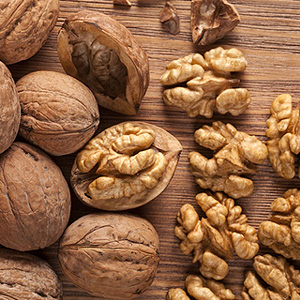
Walnut
Walnuts are a delicious way to add extra nutrition, flavor and crunch to a meal. While walnuts are harvested in December, they are available year round a great source of those all-important omega-3 fatty acids.
It is no surprise that the regal and delicious walnut comes from an ornamental tree that is highly prized for its beauty. The walnut kernel consists of two bumpy lobes that look like abstract butterflies. The lobes are off white in color and covered by a thin, light brown skin. They are partially attached to each other. The kernels are enclosed in round or oblong shells that are brown in color and very hard.

Pistachu
Pistachios are a great source of copper, manganese, and phosphorus, which help build strong, healthy bones. They also contain significant amounts of potassium and magnesium, which help regulate heart rate and blood pressure. An especially rich source of vitamin B6 and the other B vitamins, pistachios can help you fight infections, build muscles, and give you a boost of energy.
Fortunately, pistachios are amongst the highest fiber nuts, Fiber has been shown to help control blood sugar, lower cholesterol, and possibly help with weight management and reduce the risk of some types of cancer.
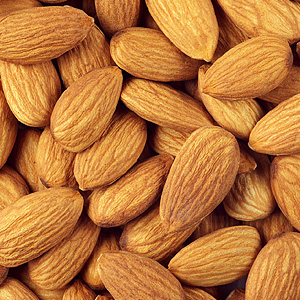
Almonds
Almonds were thought to have originated in regions in western Asia and North Africa. The Romans referred to almonds as the “Greek nut” in reference to the civilization suggested to have first cultivated them. Almonds are a great source of vitamin E, with 25g providing 70 percent of the recommended daily allowance. They also have good amounts of magnesium, potassium, zinc, iron, fiber and are a good source of healthy monounsaturated fat. They contain more calcium than any other nut which makes them great for vegetarians who do not eat any dairy products.
They also contain amygdalin, also known as laetrile or vitamin B17, the controversial anti-cancer nutrient. As almonds are high in protein, around 18 percent, and contain virtually no carbohydrates, they are ideal for diabetics, pre-diabetics or anyone with blood sugar issues.

Canned Products

Tomato Paste
Tomato paste is a thick paste made from tomatoes, which are cooked for several hours to reduce water content, straining out seeds and skins, and cooking the liquid again to reduce the base to a thick, rich concentrate.[1] It is used to impart an intense tomato flavor to a variety of dishes, such as pasta, soups. It is used as an ingredient in many world cuisines.
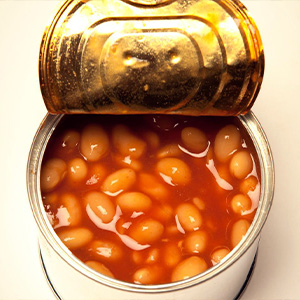
Canned Beans
Beans are members of the legume family — plants that produce pods with seeds inside. They’re a staple food in some cultures and an important source of plant-based protein and other essential nutrients, such as iron and foliate (1 Trusted Source). People in the United States commonly consume black beans, pinto beans, and navy beans, among other types. You can buy them either dried or canned. When we refer to canned beans in this article, we’re talking about cooked beans in a can with no flavoring, not baked beans or other prepared beans in a can.

Canned Vegetables
Canned vegetables are a convenient effect way of preserving vegetables for consumption when they are not readily available. Canned vegetables are full of essential nutrients, and in some cases the nutrients are more readily digestible than in the fresh equivalent. Most vegetables have naturally relatively high pH and thus fall into the low-acid group of foods. They therefore require a full sterilization treatment, unless they are acid

